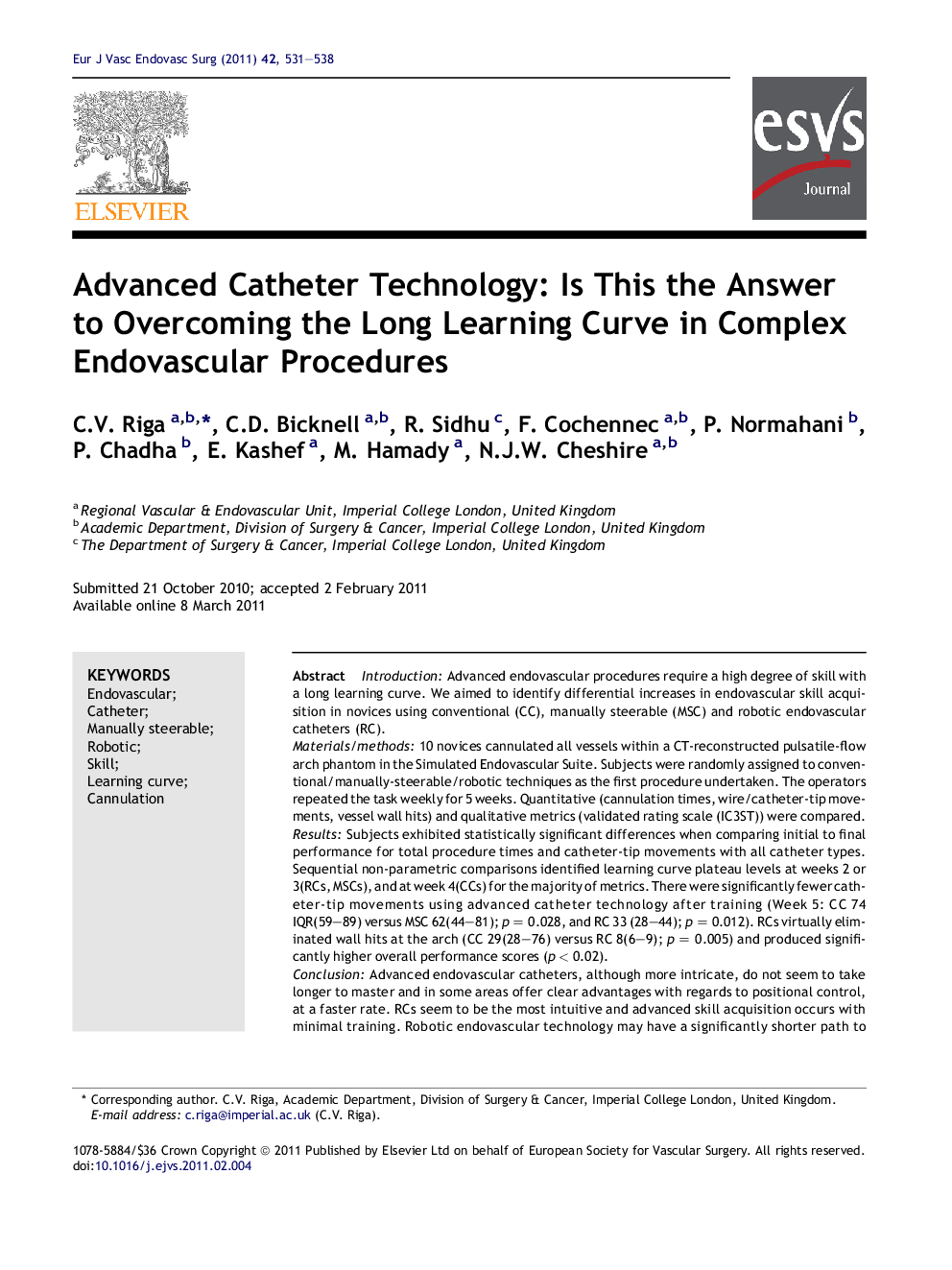| کد مقاله | کد نشریه | سال انتشار | مقاله انگلیسی | نسخه تمام متن |
|---|---|---|---|---|
| 2913104 | 1575485 | 2011 | 8 صفحه PDF | دانلود رایگان |

IntroductionAdvanced endovascular procedures require a high degree of skill with a long learning curve. We aimed to identify differential increases in endovascular skill acquisition in novices using conventional (CC), manually steerable (MSC) and robotic endovascular catheters (RC).Materials/methods10 novices cannulated all vessels within a CT-reconstructed pulsatile-flow arch phantom in the Simulated Endovascular Suite. Subjects were randomly assigned to conventional/manually-steerable/robotic techniques as the first procedure undertaken. The operators repeated the task weekly for 5 weeks. Quantitative (cannulation times, wire/catheter-tip movements, vessel wall hits) and qualitative metrics (validated rating scale (IC3ST)) were compared.ResultsSubjects exhibited statistically significant differences when comparing initial to final performance for total procedure times and catheter-tip movements with all catheter types. Sequential non-parametric comparisons identified learning curve plateau levels at weeks 2 or 3(RCs, MSCs), and at week 4(CCs) for the majority of metrics. There were significantly fewer catheter-tip movements using advanced catheter technology after training (Week 5: CC 74 IQR(59–89) versus MSC 62(44–81); p = 0.028, and RC 33 (28–44); p = 0.012). RCs virtually eliminated wall hits at the arch (CC 29(28–76) versus RC 8(6–9); p = 0.005) and produced significantly higher overall performance scores (p < 0.02).ConclusionAdvanced endovascular catheters, although more intricate, do not seem to take longer to master and in some areas offer clear advantages with regards to positional control, at a faster rate. RCs seem to be the most intuitive and advanced skill acquisition occurs with minimal training. Robotic endovascular technology may have a significantly shorter path to proficiency allowing an increased number of trainees to attempt more complex endovascular procedures earlier and with a greater degree of safety.
Journal: European Journal of Vascular and Endovascular Surgery - Volume 42, Issue 4, October 2011, Pages 531–538